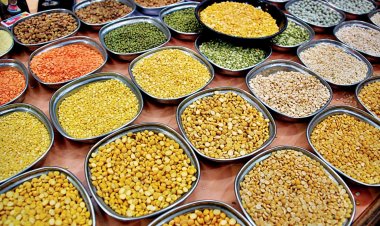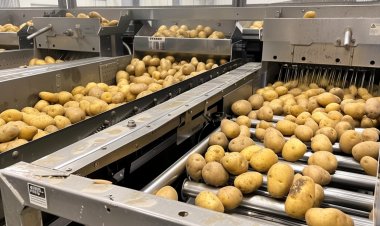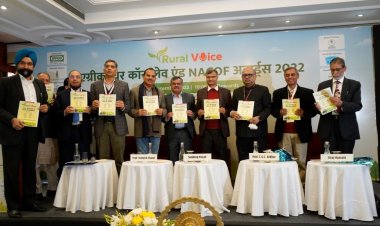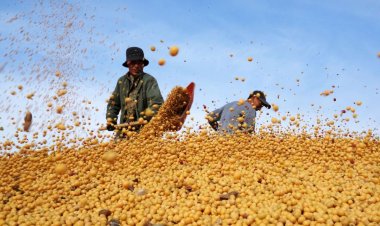Agriculture has to wait for its Amrit Kaal
the bigger question is why farmers and rural India had been made to wait for their Amrit Kaal as allocations for almost all major schemes and heads for agriculture have been reduced in the budget or if there is any increase, it is very moderate. Budget for 2023-24 has not any major scheme or out of box thinking for the agriculture sector and farmers. Even it has not a reasonable share in the huge provision of ten lakh crore infrastructure investment. It looks like the Agriculture sector and farmers have to wait for their Amrit Kaal, and it may come as off budget announcements before some politically important states assembly polls around the end of this year or in an interim budget just before the general election of 2024
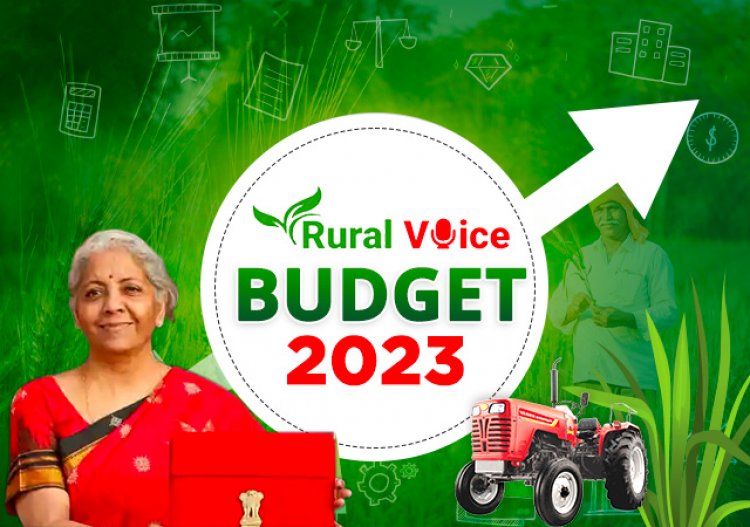
Union Finance Minister Nirmala Sitharaman presented a super budget for the financial year 2023-24 in Parliament on Wednesday. As she has claimed this is the first budget of Amrit Kall with many big announcements for New India. Digitalisation, digital economy, green hydrogen, promoting electric vehicles, digital library etc. It has a new tax regime to please the middle class, it has reduced the surcharge rate on income tax for the rich from the highest level in the world.
It has big outlay for PM Aawas Yojana, provision of skilling youth, skill programme for artisans Vishawkarma VIKAS, a saving scheme for women, deposit limit increased for senior citizens and many more provisions.
But the bigger question is why farmers and rural India had been made to wait for their Amrit Kaal as allocations for almost all major schemes and heads for agriculture have been reduced in the budget or if there is any increase, it is very moderate. Budget for 2023-24 has not any major scheme or out of box thinking for the agriculture sector and farmers. Even it has not a reasonable share in the huge provision of ten lakh crore infrastructure investment.
It looks like the Agriculture sector and farmers have to wait for their Amrit Kaal, and it may come as off budget announcements before some politically important states assembly polls around the end of this year or in an interim budget just before the general election of 2024.
Outlay for Mahatma Gandhi National Rural Employment Guarantee Programme, a legal job guarantee scheme in rural India for 2023-24 is Rs 60,000 crore, down from revised estimate for the current fiscal 2022-23 at Rs 89,400 crore, showing a reduction of Rs 29,400 crore for the new financial year. It is a flagship programme to create jobs in rural areas. This reduction indicates that the government thinks that rural job demand will go down in the coming year.
Irrigation is the most critical infrastructure for the agriculture sector. Outlay for Pradhan Mantri Krishi Sinchai Yojna for current year is Rs 12,954 crore, against revised estimate for this scheme at Rs 8,085 crore. Provision in the new budget for this scheme is Rs 10,787 crore rupees. It indicates that the government is reducing expenditure on irrigation infrastructure.
Similarly, a much publicised scheme was given an allocation of Rs 900 crore for the current fiscal but spending will be Rs 290 crores as per revised estimate and outlay for the coming year has been reduced to Rs 639 crore.
Flagship scheme for agriculture Rashtriya Krishi Vikas Yojna was given an outlay of Rs 10,433 crore for current fiscal. Outlay for next year is Rs 7,500 crore for this scheme.
Farmers were very optimistic for an increase in Pradhan Mantri Kisan Samman Nidhi in the new budget. Outlay for the current year was Rs 68,000 crore but spending in the revised estimate for this year is Rs 60,000 crore and the same allocation has been made for the new fiscal. Provision for FPOs for the current fiscal year was Rs 500 crore as per revised estimate amount to be spent will be Rs 955 crore and same is the outlay for next fiscal year.
An ambitious scheme for covering the farmers due to crop loss, Fasal Bima Yojna has been given an outlay of Rs 13,625 crore rupees. It is lower than the outlay of Rs 15,500 crore rupee for current fiscal, expenditure in the current fiscal as per revised estimate will be Rs 12,376 crore.
It indicates that the government does not have much interest in increasing the coverage of this critical scheme for the farmer which protects them from crop loss due natural calamities. Provision for modified interest subvention scheme has been made Rs 23,000 crore.
For the current financial year spending for the concessional interest credit will be Rs 22,000 crore as per revised estimate. As the government has announced a target of 20 lakh crore for agriculture credit in the next financial year, this increase will meet extra subsidy requirements.
There is huge savings for the government on the front of fertiliser and food subsidy.
Due to big decrease in the prices of Urea and DAP in the international market which reduced the cost of import of these fertilizer for the country government will save this subsidy and it is reflecting the budgetary provision for urea subsidy is Rs 1,31,100 crore for the coming fiscal comparing to the spending of 1,54,098 crore in the current fiscal, which translate to the saving of Rs 27,122 crore.
Same is the case for Nutrient Based Subsidy Scheme for non-urea fertilisers as outlay for coming year is Rs 44,000 crore against the revised estimate of Rs 71,122 crore for the current fiscal. Subsidy provision for National Food Security Act is Rs 1,37,207 crore for 2023-24 which is against Rs 2,14,696 crore for the current year as per revised estimate of the budget.
Outlay for decentralised procurement of foodgrains under National Food Security Act is Rs 59,793 crore for next year, while revised estimate for current financial year for this head is Rs 72,283 crore.
The above numbers show that the government will have a huge saving on the front of food and fertiliser subsidies. There was an optimism that the government will use this opportunity to increase outlay for agriculture and rural sector as capital expenditure or an increase in direct income support to farmers through PM Kisan Samman Nidhi.
There are eye-catching graphic presentations made by the publicity department of the government to make a good budget for agriculture and the rural sector. It highlights the enhanced limit of 20 lakh crore for agriculture credit, a tinkering in PM Matsya Sampada Yojna through a sub-scheme and a provision of 6000 crore rupees.
Agriculture Accelerator Fund for New Age infrastructure for farmers, Digital public infrastructure for agriculture. Millets have been given a new name Shree Anna but how farmers will get higher price for millets is not part of the budget. One core farmer will be facilitated to adopt natural farming with the help of bio input resource centres. Our agricultural scientists are not very confident in the results of natural farming, how farmers will be attracted to the natural farming system will be seen in the coming years.
Announcements made for the cooperative sector is a welcome step and will boost the cooperative sector which has many successful examples of farmer’s collectives. Income tax provision, ease of doing business, cash deposit and withdrawal limit, lower tax rate for new cooperative commencing business, multipurpose cooperatives and decentralised storage facilities for agro produce are good initiatives for the growth of the cooperative sector in this budget.



 Join the RuralVoice whatsapp group
Join the RuralVoice whatsapp group

















